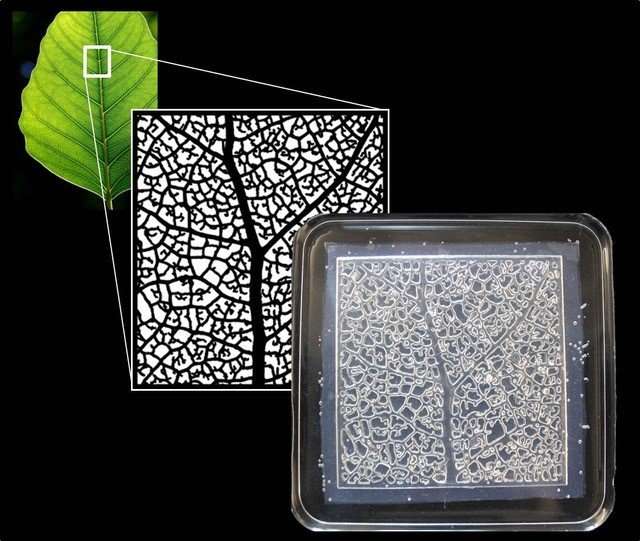Exploring biomimicry—building the next generation of adaptable materials from nature

"Adapt, grow, heal" probably sounds like sage parental advice to students just off to college. In fact, it is the biological rationale behind recent research at the University of Maine studying biomimicry. One of biomimicry's foundational questions is how do organisms adapt, grow, heal, and even survive.
In an effort to find the answer, biomimicry uses real living systems to inspire the design and fabrication of the next generation of materials that can solve problems as nature does, from healing wounds to preventing infections, to one day, perhaps, "growing" rockets and cars.
"Scientifically, the most significant and interesting aspect of this work is first using this approach to understand how these interface-driven phenomena occur, and then working to use this understanding to drive the biological system to do what we want it to do or reproducing it artificially," said University of Maine professor of biological engineering, Caitlin Howell.
Howell's team's work will be presented during the AVS 64th International Symposium and Exhibition, Oct. 29-Nov. 3, 2017, in Tampa, Florida.
Howell began her inquiry into living systems with fungi, researching how these smallest of life forms break down giant trees, some of the few organisms able to do so. She and her team now focus on generating new technology based on how living systems such as these do what they do.
A major area of potential application for their work is in bacterial adhesion leading to biofilm formation. Biofilms cause a wide range of problems in industry and medicine. Using a method inspired by the Nepenthes pitcher plant, which uses a thin, immobilized layer of water to repel insects, Howell's group can create selective patterns of bacterial adhesion using common laboratory materials and simple bench-top surface treatments.
"Inspired by the vascular systems of plants and animals, we can then make these surfaces continuously self-replenishing by embedding channels within the material itself. The channels are then filled with excess liquid, which can diffuse to the surface and heal depleted or damaged areas," Howell said.
The team is also working to develop these materials on paper substrates to create low-cost, lightweight pathogen-handling materials for use in diagnostics or analytics. "Through this work, we aim to develop new and versatile tools for the exploration and control of microorganisms," Howell said.
To many, the idea of designing self-healing systems or growing a rocket or car, with surface functionalities that change on demand to be heat-resistant, radiation-repellent, camouflaged, soft or hard, sounds like science fiction. But scientific imagination is the very essence of technological innovation; it is rooted in the seemingly fantastical.
"Airplanes and wireless communication were once science fiction, too," Howell said. "I see my work being among the fundamentals used to make these types of things possible."
Provided by Science and Technology of Materials, Interfaces, and Processing



















